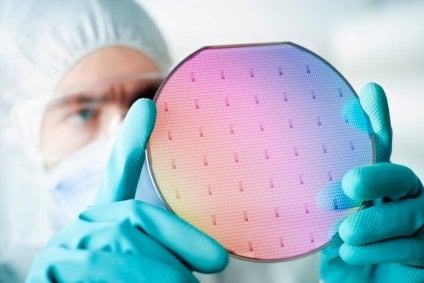SIA Supports Efforts to Modernize U.S. Chemicals Law
Wednesday, May 20, 2015, 5:00pm
by David Isaacs, Vice President, Government Affairs
The sound regulation of chemicals essential to semiconductor manufacturing is a key issue for the continued success of the U.S. semiconductor industry. SIA is encouraged that both houses of Congress have developed bipartisan bills (S. 697; House Discussion Draft) to modernize the Toxic Substances Control Act (TSCA), including positive reforms on many issues of interest to the semiconductor industry.
TSCA was enacted in 1976 and has not been updated since. Updates to this law are long overdue, and we hope Congress will approve legislation this year that achieves targeted reforms to the law.

The manufacturing of advanced semiconductors requires the controlled use of chemicals and materials that are selected for their unique chemical and physical attributes. In most cases, there are no viable alternatives to these chemicals, and the industry employs sophisticated controls to minimize releases of these chemicals to the environment or exposure to workers. In addition, finished semiconductor devices may contain very small quantities of these chemicals, and the complex manufacturing equipment necessary for the production of semiconductors may also contain these same chemicals.
The legislation being considered will strengthen the authority of the Environmental Protection Agency (EPA) to evaluate, prioritize, and take action on chemicals that pose risks to health and the environment, while also providing the semiconductor industry with greater certainty in the selection and use of chemicals in our manufacturing processes. The bills direct EPA to assess chemicals based on their conditions of use and potential for exposure. Given the management practices in our industry and small quantities of chemicals used, this approach to assessment and prioritization should allow EPA to focus on chemicals and uses that pose the greatest risks. In addition, where EPA takes action on chemicals that pose an unreasonable risk, the bills would allow EPA to consider costs and the feasibility and safety of alternatives in setting a safety standard. In light of the challenge of identifying and incorporating potential substitutes into our processes, SIA strongly supports this approach.
The approach of the bills under consideration to “articles” (i.e., finished products that contain regulated chemicals) is another important step forward. Finished semiconductors may be subject to regulation under TSCA, even though any chemicals present in the device are bound in a physical matrix and cannot be released to the environment under normal conditions of use. In addition, advanced manufacturing equipment essential to our operations may contain chemicals subject to regulation under TSCA. Both the Senate and House bills include language that would make regulation of articles a last resort, invoked only when a risk cannot be mitigated effectively through regulation of chemical substances. SIA strongly supports this approach.
Finally, both bills make progress on the issue of preemption of state law. Under existing law, each individual state may regulate chemicals or chemicals contained in products, thereby posing the risk of a burdensome patchwork of state laws that could make compliance challenging for the global semiconductor supply chain and products distributed in interstate commerce. The pending bills do not completely fix this problem, but the bills represent a positive step forward in this regard.
Both bills are moving through the legislative process with strong bipartisan support. SIA is working to make further improvements to the bills and we look forward to working with Members and staff to get TSCA modernization enacted into law this year.